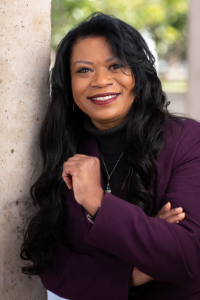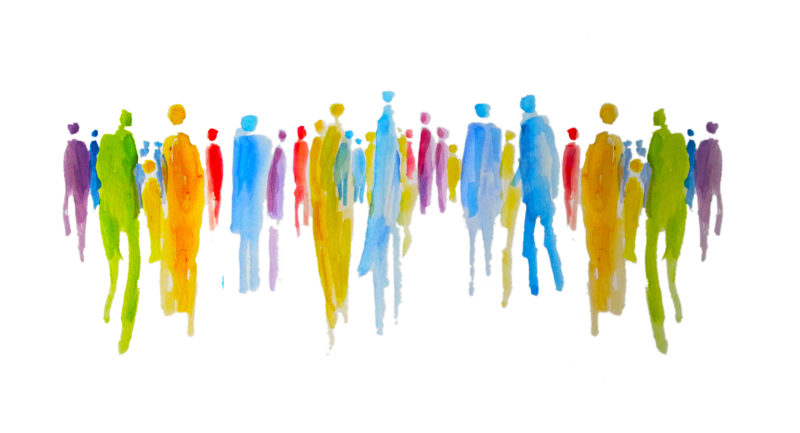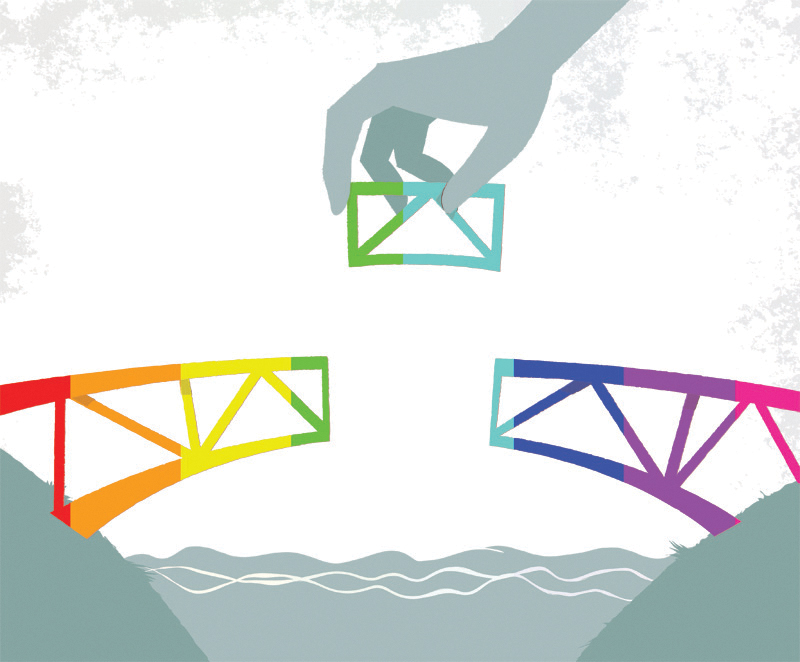By Hali Anderson
As someone who has served on various diversity committees, I know firsthand that recruiting diverse students or employees is one thing, but retaining and ensuring that these diverse individuals maximize their potential is a whole different ballgame altogether. In a past issue, I briefly covered the Google lawsuit and the now infamous Google memo written by James Damore. In that memo, Damore shared his ideas on how diversity is harmful to Google as well as the diverse candidates who were being forced into job positions with which, he believed, they were biologically incompatible. Damore’s employment with Google was terminated as a result of this memo. In his subsequent lawsuit, Damore alleged that he felt that he was unlawfully discriminated against for his status as a white male and his conservative viewpoints. The lawsuit and the memo illustrated an interesting dichotomy that we are also seeing play out in our day-to-day lives. As the world becomes more diverse, how does one make sure that everyone still feels included?
How does a school or employer ensure that those who were once or are still in the majority still feel valued and included when the workforce, as they know it, is changing? Conversely, how does a school or employer ensure that those who are changing the workforce feel valued and included?
Now, to be sure, this is nothing new. I’ve listened to my parents and other black Americans talk about their experiences of being bussed in to white schools and the negative impact it had on their psyche and self-esteem. One can imagine how it must have felt to be brought into a new school full of “others” who make you feel unwelcome, yet you are supposed to be thankful for this opportunity that has been thrust upon you. These are natural feelings that any human, let alone a child, would have. If you can put yourself in the shoes of those brave, but scared children, you can see how increasing diversity is not the end of the story. It is the beginning.
Another example — I consider myself to be a proud Xennial. For those of you who don’t know what that is, it’s the generation of people between Generation X and the millennials. As described in an article on Romper.com:
We see ourselves reflected in descriptions of kids who played Oregon Trail, adolescents who used dial-up to chat on AOL instant messenger, and college students using mobile phones for the first time. Our pre-internet childhood separates us from millennials, and it’s obvious now that we’re parents.
Personally, I think that being an Xennial is the best of both worlds because I feel I can relate to and understand both Gen X-ers and millennials. The same is not often true for my two counterparts. Gen X-ers often feel resentful toward the new generation of millennials while millennials may feel unfairly criticized by Gen X-ers. Both Gen X-ers and millennials tend to feel misunderstood by one another. Again, these are emotions with which most people can identify.
While these two examples are vastly different, they both highlight the issue of what happens when there is diversity without inclusion. What is the difference between these two concepts? And how does equity come into play?
Independentsector.org aptly states:
Diversity includes all the ways in which people differ, encompassing the different characteristics that make one individual or group different from another. While diversity is often used in reference to race, ethnicity and gender, it also includes age, national origin, religion, disability, sexual orientation, socioeconomic status, education, marital status, language and physical appearance. It also includes diversity of thought: ideas, perspectives and values. We also recognize that individuals affiliate with multiple identities.
Inclusion is the act of creating environments in which any individual or group can be and feel welcomed, respected, supported and valued to fully participate. An inclusive and welcoming climate embraces differences and offers respect in words and actions for all people. It’s important to note that while an inclusive group is by definition diverse, a diverse group isn’t always inclusive.
Equity is the fair treatment, access, opportunity and advancement for all people, while at the same time striving to identify and eliminate barriers that have prevented the full participation of some groups. Improving equity involves increasing justice and fairness within the procedures and processes of institutions or systems, as well as in their distribution of resources. Tackling equity issues requires an understanding of the root causes of outcome disparities within our society.
Or as Dwayne Crenshaw, CEO of RISE San Diego and RISE@Work (quoting Verna Myers), simply puts it, “Diversity is being invited to the party. Inclusion is being asked to dance.” RISE@Work is a local company that offers customized, interactive Diversity, Equity & Inclusion (DEI) Leadership Training and consulting to employers and other organizations to help them make sure their workforce can adapt to the world’s increasingly diverse population. To deliver this training, RISE@Work uses Rise Fellows who are diverse leaders in the San Diego community. The trainers are individuals who have experienced lack of equity and inclusion themselves.
JONES, a leadership development, diversity and organizational change consulting firm, is another local company offering such training. Dr. Steven Jones and his team of consultants offer trainings to both education-sector and corporate audiences focusing on the importance of inclusion in maintaining a healthy and thriving environment for students and employees. Dr. Jones explains, “It is important that we train our leaders in companies to be inclusive leaders and to have the skills that allow them to leverage diversity of thought, diversity of talent and diversity of background. This work is a skillset as opposed to a value system. What DEI Training recognizes is that, as a leader, I can have the best of intentions, but if I don’t have the skills to minimize the impact of conscious and unconscious bias, then with the best of intentions, I may fall victim to the “similar to me bias,” which is the desire to work with people that are like myself. My go-to person will be someone that is more similar to me than different. I won’t do that out of prejudice, but instead out of the intention of managing time and risk. When selecting to work with someone who looks just like me, I can use less words with them. I can be more efficient with my time. I am not thinking about diversity — I am thinking of time-management. From a risk management perspective — when I view someone as more similar to me, handing them a job or promotion is less of a risk, because I think, if “I’m smart, they’re smart.” This “similar to me bias” ends up perpetuating a workplace where people do not feel included and, in reality, do not end up having the same opportunities as others.
The reality is that diversity without inclusion is really a recipe for disaster. And I say this as someone who has counseled both employers and employees on these issues, and experienced them myself. What good does it do to recruit diverse talent if the talent does not feel welcomed when they arrive? And finally, what good is feeling welcomed if, in reality, you do not actually have the same opportunity for success? As stated by Meg Bolger, Social Justice Facilitator and Founder of Same Team, “Equity is not an outcome. Equity refers to the process a company consistently engages in to ensure that people with marginalized identities have the opportunity to grow, contribute and develop — regardless of their identity.”
These are the exact issues that DEI Training is meant to address. Andrew Picard, Vice President of Operations at San Diego Workforce Partnership, took the laboring oar of running the procurement process for DEI Training at SDWP. Picard explained, “We decided to pursue DEI work not only because it’s the right thing to do, it’s the smart thing to do. Creating a working environment where all people feel empowered to contribute as their full self makes us more effective in executing our mission in the community.” Picard went on to say, “DEI Training has been a valuable and enriching experience. What DEI work teaches us is that it is not any single experience, but a journey with a variety of growth opportunities and tensions along the path. We strive to integrate DEI as a philosophy in which we approach our business, both internally in developing our colleagues and externally in how we serve the region.”
Dr. Jones cautions, “DEI Training alone is not a strategy. Companies must engage in a culture change that supports leaders and the skills they learn during training. Leaders need to be able to apply those skills. Application of these skills requires a culture of accountability and a larger, strategic culture change initiative so managers can develop the necessary skillset for inclusive leadership. It’s an ongoing process.”
With San Diego’s population becoming more diverse every year, it is imperative that schools and employers are prepared to embrace this growth, not to just deal with it. So, San Diego, let’s take the bull by the horns, seize the day and lean on in. The time is here to move from diversity to diversity, equity and inclusion. The success of San Diego depends on it.
Hali Anderson is an attorney with GrahamHollis APC.
This article was originally published in the Sep/Oct 2018 issue of
San Diego Lawyer Read More



